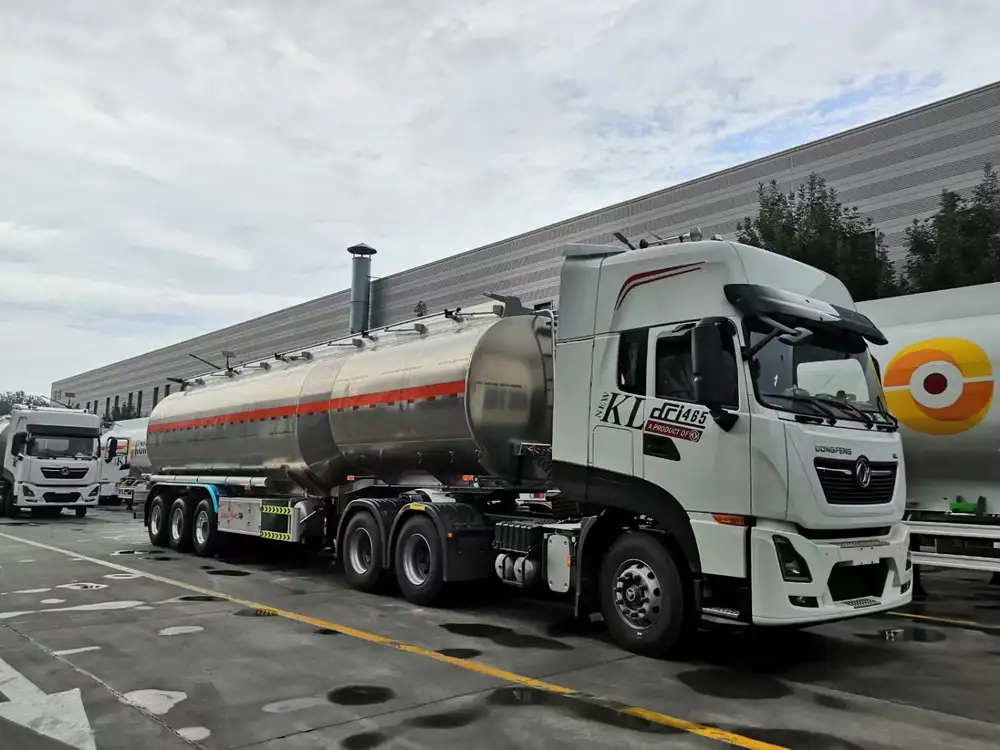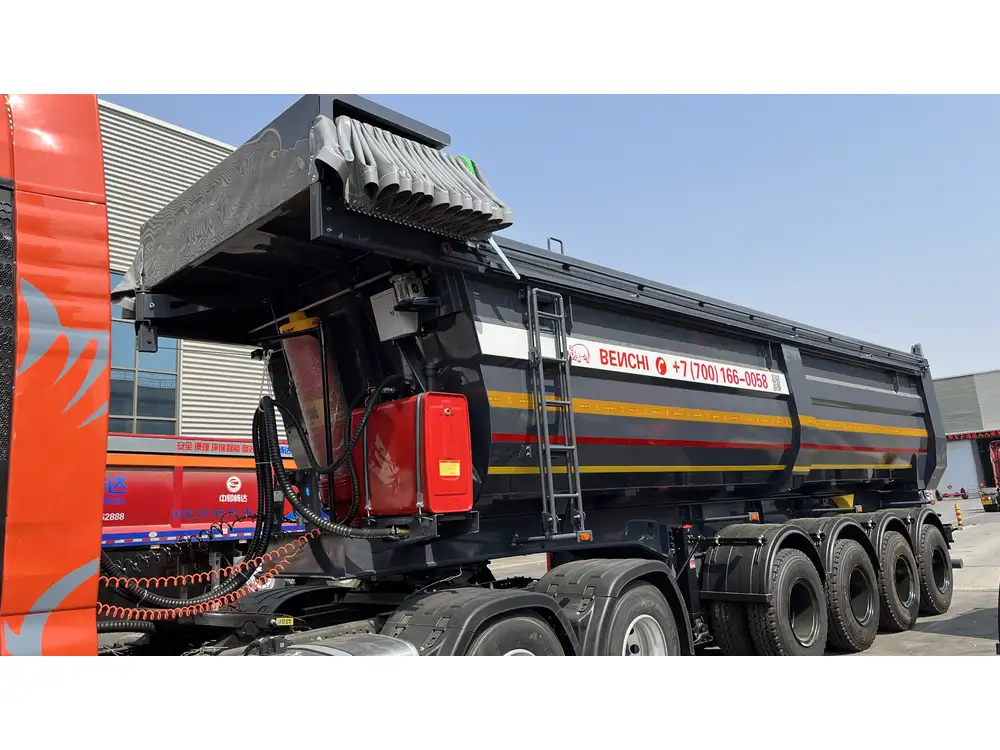In the world of logistics and transportation, the size of a semi-truck is a crucial factor that affects everything from loading capacity to maneuverability. Knowing how big a semi-truck is can help businesses optimize their operations and ensure compliance with regulations. In this article, we will delve into the dimensions of semi-trucks, breakdown specifications, explore their configurations, and highlight the importance of understanding these measurements in various contexts.
Key Dimensions of Semi-Trucks
Overall Length
The overall length of a semi-truck, also known as a tractor-trailer, is typically around 70 to 75 feet. However, its exact length can vary based on several factors, including state regulations, axle configurations, and load requirements. Understanding these variations is essential for fleet managers and drivers.
| Configuration | Length (Feet) |
|---|---|
| Standard Semi | 70-75 |
| Extended Tow | Up to 80 |
| Double Trailer | 100+ |

Width and Height
The width of a standard semi-truck is generally 8.5 feet (102 inches), which is the maximum width allowed on most highways. The height, on the other hand, typically ranges from 13.5 to 14 feet. Acknowledging these dimensions is vital for route planning, determining clearance requirements, and avoiding bridges with height restrictions.
| Measurement | Standard Value |
|---|---|
| Width | 8.5 feet (102 inches) |
| Height | 13.5 – 14 feet |
Axle Configurations Impacting Size
The configuration of axles plays a significant role in determining the overall length and capacity of a semi-truck. Here’s a detailed breakdown of the common axle setups:
5-Axle Configuration
This is the most prevalent configuration, commonly used for general freight. A typical 5-axle semi-truck would feature:
- Three axles on the trailer
- Two axles on the tractor
This allows for a maximum gross weight (combined weight of the truck and trailer) of 80,000 pounds, adhering to federal regulations in the United States.

6-Axle Configuration
Increasing the number of axles to six enhances weight distribution and allows for transporting larger loads. This configuration is ideal for heavy machinery and larger shipments, often found in specialized freight industries.
| Axle Setup | Total Axles | Max Weight Capacity |
|---|---|---|
| 5-Axle | 5 | 80,000 pounds |
| 6-Axle | 6 | Up to 100,000 pounds |
Understanding Weight Limits and Regulations
Federal Regulations
The Federal Highway Administration (FHWA) mandates certain weight limitations for semi-trucks to ensure road safety and structural integrity. It’s important for operators to understand these regulations to avoid hefty fines and accidents. The Bridge Law and Federal Axle Weight Limits are crucial considerations.

State-specific Regulations
While federal guidelines set the baseline, many states have their own specific regulations. For example, some states allow truck weights exceeding 80,000 pounds, provided that the vehicle complies with local permits.
| Regulatory Aspect | Federal | State Examples |
|---|---|---|
| Max Weight | 80,000 lbs | Texas: 90,000 lbs permit |
| Axle Distribution | Yes | Varies by state |
The Role of Semi-Truck Dimensions in Operations
Understanding the dimensions of semi-trucks is not merely about compliance; it has long-reaching implications for logistics, safety, and profitability.
Load Optimization
Knowing the dimensions allows for strategic load placement and optimization. Understanding the truck’s height and length enables better stacking and packing strategies, thereby maximizing cargo space. For example, companies can utilize taller containers when the truck can accommodate height.

Route Planning
Height and weight restrictions can significantly affect route planning. Knowing how big a semi-truck is ensures that drivers do not encounter low bridges or narrow roads that could lead to detours or delays. Digital routing tools often factor in truck dimensions to optimize travel routes.
Traffic and Parking Considerations
With urban areas becoming increasingly congested and parking spaces more limited, knowing a semi-truck’s dimensions helps drivers in locating suitable parking spots. Businesses can plan operations around loading and unloading zones, thus minimizing operational delays.
Varieties of Trailers Impacting Length and Size

Flatbed Trailers
Flatbed trailers are versatile and commonly used for transporting large, heavy loads. They can range from 48 to 53 feet in length. While they provide flexible loading options and easy access, they do come with challenges, such as susceptibility to load shifting.
Reefer Trailers
Reefer trailers are crucial for transporting temperature-sensitive goods. These trailers typically measure 53 feet, providing ample space while also maintaining temperature through refrigeration technology.
Dry Van Trailers
The standard dry van is generally 53 feet long, optimizing space for various goods. This trailer type is excellent for protection against the elements and securing loads, making it a prevalent choice for many freight companies.
| Trailer Type | Typical Length | Key Use Cases |
|---|---|---|
| Flatbed | 48-53 feet | Large and heavy loads |
| Reefer | 53 feet | Temperature-sensitive goods |
| Dry Van | 53 feet | Protects against weather elements |

Future Trends in Semi-Truck Design
The semi-truck industry is evolving. With advancements in technology, we begin to see changes in size and regulation perspectives.
Electric and Autonomous Trucks
The emergence of electric and autonomous trucks is set to change the landscape of semi-truck dimensions. With lesser components and a focus on efficiency, future trucks may become more streamlined. Companies are focusing on making trucks lighter to improve efficiency without sacrificing cargo capacity.
Innovation in Materials
Lightweight materials such as composites and advanced aluminum alloys are becoming more prevalent in semi-truck construction. This innovation allows manufacturers to produce trucks that maintain structural integrity while reducing overall weight, enabling higher payload capacities and improved fuel economies.

Conclusion: Navigating the Complexity of Semi-Truck Dimensions
The dimensions of semi-trucks significantly influence logistics and transportation operations. Understanding the intricacies of length, width, height, and axle configurations can enhance route planning, allow for effective load management, and ensure compliance with regulations. As the industry advances, staying informed about innovations and changes will be vital for maximizing operational success.
Whether you are a fleet manager, a logistics coordinator, or a driver, grasping the dimensions of semi-trucks is essential for navigating the complexities of modern transport.
By equipping yourself with this knowledge, you are better positioned to optimize your operations and adapt to the ever-changing landscape of the transportation industry.



